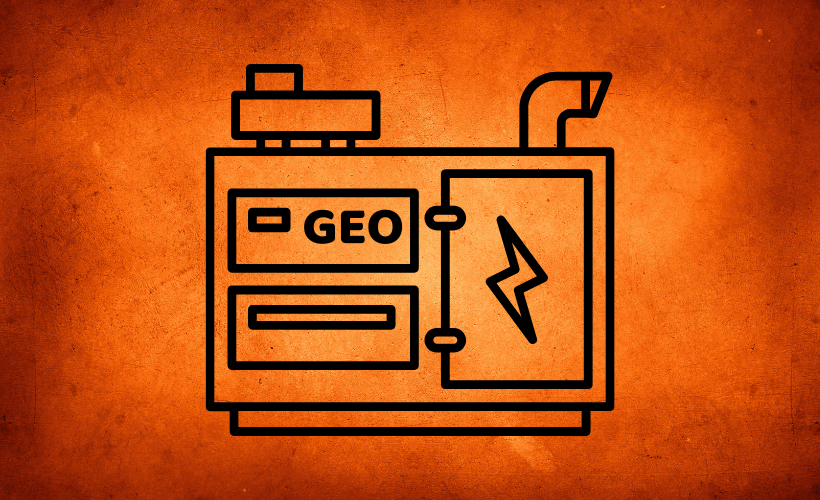Generative Engine Optimization (GEO) is about making sure your content gets noticed by AI tools when people ask questions. It’s like preparing your content so engines like ChatGPT or Perplexity naturally want to include it.
For example, if someone asks, “What’s the best skincare for dry skin?” and the AI suggests your article, that’s GEO working for you.
With GEO, you can create content that’s clear, useful, and trustworthy, so AI will see you as the right source to recommend to more people.
How Generative Engine Optimization Works
- Content Summarization: Generative engines scan your content and create concise, easy-to-read answers. If your content is clear, AI is more likely to use it.
- Retrieval-Augmented Generation (RAG): When AI doesn’t know an answer, it pulls relevant, up-to-date info from online sources before generating a response. This helps your content stay relevant.
- Citing Sources: AI references credible websites to back up its answers. Well-structured and trustworthy content increases the chance your site is cited.
- Create AI-friendly content: Write your content clearly and in a structured way so AI can easily understand it. This increases the chance your content will be included in answers.
- Answer user questions: Focus on what people are actually asking AI, not just keywords. Your content gets noticed when it directly solves their queries.
- Use headings and lists: Organize content with headings, bullets, and short paragraphs. This helps AI scan and highlight the key points quickly.
- Add credible sources: Include trustworthy references so AI sees your content as reliable. Being credible increases the likelihood of being cited.
- Update regularly: Keep your content fresh as AI queries and trends change. Staying relevant ensures your content continues appearing in responses.
- Combine with marketing: Integrate GEO with your SEO and digital marketing efforts. This makes sure your content reaches people through AI and traditional search.
- Monitor results: Track how AI engines use your content and refine it. You’ll learn what works and improve your visibility consistently.
On-Page GEO
On-Page GEO focuses on optimizing your website content so generative engines can easily understand, trust, and surface it in answers. It’s about structuring your pages for maximum AI clarity and relevance.
- FAQ Schema: Use structured FAQ markup to help AI understand questions and answers on your page. This increases the chance your content appears directly in AI responses.
- Clear headings and structure: Use H1, H2, H3 tags and organized sections so AI identifies key points easily.
- Concise, helpful content: Write short, precise answers that directly solve user queries for better AI inclusion.
- Internal Links: Link to other relevant pages on your site. AI understands context and relationships between topics better.
- Internal citations: Link relevant pages or sources within your site to provide context and authority.
- External Citations: Include trusted sources and references. Credible citations make AI more likely to consider your content reliable.
- Metadata optimization: Use meta titles, descriptions, and schema markup to give AI extra context about your content.
- Bullet Points & Lists: Highlight key points in scannable formats. Lists help AI pick important information quickly.
- Schema / Structured Data: Add markup to indicate content type like article, recipe, or product. AI interprets your page more accurately.
- Images & Alt Text: Use visuals with descriptive alt text. AI can understand and summarize your content more effectively.
- Regular updates: Keep content fresh to match evolving AI queries and trends.
For example, if your “healthy breakfast ideas” page has clear headings like “Quick Recipes” and “Nutrition Tips” with well-structured content,
AI can easily summarize and recommend it when someone asks, “What are healthy breakfast options?”
Off-Page GEO
Off-Page GEO focuses on building authority and trust through citations, brand mentions, and online signals. It helps generative engines recognize your content as credible and relevant.
- Citations: Ensure your business or content is mentioned accurately across multiple websites and platforms. This increases AI trust.
- Brand mentions: Being talked about or referenced on blogs, forums, or social media signals authority to generative engines.
- Search Everywhere Optimization (SEWO): Your content and brand appear across search engines, directories, and AI sources, improving visibility.
- Partnership recognition: Collaborating with credible sites or influencers boosts AI’s confidence in your content.
- Content syndication: Sharing content across multiple platforms helps AI see it as widely recognized and reliable.
For Example, if your “healthy breakfast ideas” guide is mentioned in recipe forums, social media posts, and local directories,
AI engines are more likely to include it when someone asks, “What are healthy breakfast options?”
Different Types of GEOs
To clarify, I’ll walk you through the different types of GEO and explain how each one works. Even though they all connect to Generative Engine Optimization, each has its own role.
| Type of GEO | What It Means | Core Focus |
|---|---|---|
| GEO in Marketing | Making your brand appear in AI answers to customer questions. | Brand visibility in AI conversations |
| GEO in Digital Marketing | Optimizing your online content for generative engines. | AI-ready content across digital platforms |
| GEO in Marketing AI | Using AI itself to predict and guide GEO strategies. | Data-driven adaptation to future demand |
| GEO in SEO | Evolving SEO so it works for generative engines, not just Google. | Structuring content for AI citation |
| GEO in AI | How generative engines decide which content to surface. | Optimizing Your Online Content for Generative Engines. |
GEO vs SEO
Now, let’s take a closer look at GEO vs SEO. While both aim to increase your content’s visibility, they work in different ways and focus on different goals.
| Feature | AI recommendations, inclusion in responses, and engagement with AI-driven tools. | Traditional SEO |
|---|---|---|
| Purpose | Optimizes content to be surfaced by AI and generative engines. | Optimizes content to rank in search engines like Google or Bing. |
| Focus | AI visibility, clarity, and trustworthiness for generative responses. | Keyword ranking, backlinks, and search engine algorithms. |
| Content Approach | Structured, concise, and helpful so AI can cite it. | Informative and optimized for search engine crawlers. |
| User Interaction | Targets questions asked to AI or chat-based tools. | Targets typed search queries by users. |
| Update Frequency | Content often needs regular updates to match AI trends. | Updates are based on SEO best practices and algorithm changes. |
| Metrics | AI recommendations, inclusion in responses, engagement with AI-driven tools. | Organic traffic, rankings, click-through rates, and backlinks. |
Conclusion
Generative Engine Optimization (GEO) is key to getting your content noticed by AI. It helps your pages appear in responses to real user questions.
On-Page GEO focuses on structuring and formatting your content. Clear headings, lists, and schema make it easy for AI to understand and summarize.
Off-Page GEO builds trust and authority through citations, brand mentions, and visibility across platforms. This signals AI that your content is reliable.
To make GEO implementation easier, Rank Math can help in many ways, from schema setup to metadata optimization. You can download it for free and start improving your content today.
** FAQs **
What is GEO in Marketing?
In marketing, GEO means shaping content so that generative engines recommend your brand when users ask questions. It’s about visibility beyond traditional SEO.
What is GEO in Digital Marketing?
In digital marketing, GEO is about optimizing every digital touchpoint so that AI-driven search surfaces your content. It’s not just keywords but also clarity, authority, and intent alignment.
What is GEO in Marketing AI?
When paired with marketing AI, GEO becomes more predictive and adaptive. AI can analyze what engines prioritize and help shape content accordingly.
What is GEO in SEO?
When paired with marketing AI, GEO becomes more predictive and adaptive. AI can analyze what engines prioritize and help shape content accordingly.
What is GEO in AI?
In AI itself, GEO refers to how generative systems decide what to surface when answering user prompts. It’s the bridge between human queries and brand visibility.



